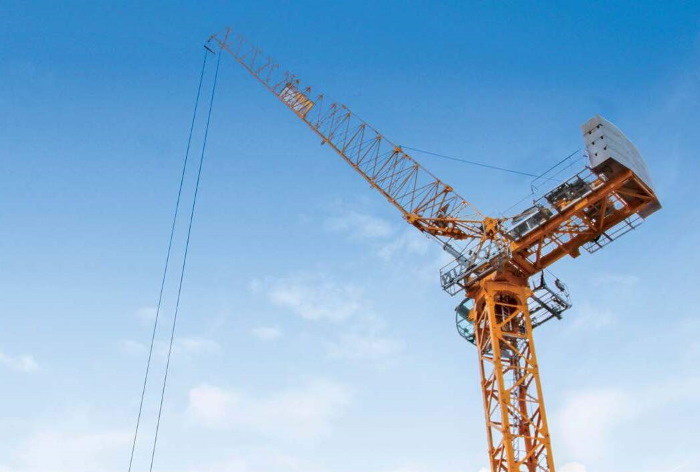Site Planning for Cranes: A Short Checklist
- Written by Hermann Buchberger

Using the right type of crane for your project can fast-track its completion. Moreover, with the implementation of new technologies, this heavy equipment has evolved into one of the safest pieces of machinery.
However, with poor planning and lack of training on the part of the operator, the risk for mishaps can increase considerably.
But with ample planning and preparation, especially in the job site, chances of injury or death, work disruption, and other unforeseen circumstances can be minimized, if not totally eliminated.
Here's a brief breakdown of the tasks that need to be completed to prepare for the use of cranes for a project.
Before selecting a suitable crane for the project, the first order of business is finding a competent person who will oversee site preparation.
Often, this choice boils down between delegating this position internally or to a third party, usually from a reputable crane hire company. Either way, your chosen overseer should have the necessary competence and experience in planning when it comes to site work. As such, it is not unusual for some construction firms to delegate this critical task to an employee designated by the crane hire company.
Once a suitable person has been chosen, his immediate task is to visit the site. The importance of this task cannot be overlooked and should be allotted ample time.
The site inspection will provide the project overseer with some critical information.
First, this will allow him to determine accurately where the crane should be positioned.
Next, the visit will allow him to assess the ground conditions and if these are suitable for bearing the weight of the crane plus the materials to be lifted and used during construction.
Your point person should also look at all potential entry and exit points and judge the best ones to use. He should also take note of potential hazards prior to developing a plan for site preparation.
With all of this information available, the overseer can start drafting a plan. Apart from a sketch of the project site and nearby areas, the plan should include details like gross load weights, the presence of hidden contents, potential collision hazards, and ground conditions.
Accidents and mishaps can lead not only to work stoppage. Worse, these can also result in a damaged reputation, loss of productivity, and low employee morale. However, all of these can be avoided through a thorough evaluation of potential risks.
First, the team involved in site preparation should identify all potential hazards. Once these hazards have been identified, the next order of business is to implement the proper control measures.
Select a crane suitable for the project
Thinking of getting a self-erecting crane or an electric luffing crane? Your initial choice for a crane hire can change depending on the evaluation of the project overseer.
Among the key factors that need to be included when selecting the right type of crane for the job are:
-
Crane capacity
-
Suitable uses for the crane
-
Crane dimensions and weight
-
Local restrictions on crane use
Ample time should also be given in determining which types of accessories should be used in conjunction with the crane. Among the most commonly used accessories are slings, pin shackles, and flat belts.
Delegate roles and responsibilities
Site preparation is a team effort which entails the proper delegation of duties. Everyone involved in the project should have the required training and competency. Failure to meet these requirements paves the way for unsafe working conditions.
The workforce requirements for the preparation of a site may vary. However, at a minimum, you should have an operations manager, project manager, engineering consultants, supervisors, operators, riggers, and signal-persons.
In some instances, the chief project overseer may delegate certain aspects of his role, often to a supervisor or a crane operator. The overseer will retain the task of providing instructions, and the appointed personnel will implement these.
It should be made clear that actual work should stop if the appointed persons do not understand the requirements of their tasks, or if there have been substantial changes in site preparation or the actual lifting operation.
Selecting a crane and preparing for its use in a construction project requires technical knowledge and experience.
To satisfy such requirements, it is worthwhile to consider handing the aforementioned steps to your chosen crane hire company. They can evaluate and prepare the project site, and help you select the appropriate crane.
This helps free up invaluable resources like time and workforce utilization while allowing you to focus on what you do best and minimize potential risks associated with using cranes for construction projects. In turn, this can lead to a safer, more productive work environment.
If you opt for this route, choose a full-service crane hire company that will provide you with assistance from start to finish — from site evaluation to selecting the right crane for the job.
AUTHOR BIO
Hermann Buchberger is the Founder and CEO of Active Crane Hire (ACH). He’s taken the company from start-up to Industry Leader offering the largest fleet of construction cranes in Australia. ACH launched a new type of crane previously unheard of in the Australian market: electric tower cranes. The company's infrastructure and associated services now comprise a fleet of trucks and trailers, a crane-rigging team, mobile crane technicians, a fleet of service vehicles, and an extensive range of crane spare parts.



